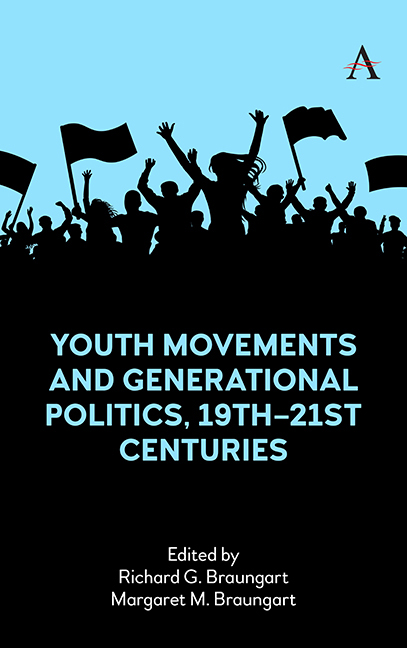13 - Political Generational Themes in the American Student Movements of the 1930s and 1960s
Published online by Cambridge University Press: 18 November 2023
Summary
Diverse studies and explanations of American student movements of the 1930s and 1960s have been offered by sociologists, psychologists, psychiatrists, and historians, but seldom have these two eras of youth unrest been compared and analyzed from a broad interdisciplinary perspective. Arguing that the student movements of both eras represented the activity of political generations, a framework for assessing a political generation is outlined here that includes consideration of psychological life-course effects, sociological cohort effects, and historical period effects. As data for analysis, the 1930s and 1960s student movements are described, along with the decades preceding each era of unrest among the youth. The principal generational themes are identified, and while there were some differences between the 1930s and 1960s student movements, they shared many similar dynamics. Both eras of student movement activity resulted from the interaction of life-course, cohort, and period effects that combined to produce nearly a decade of heightened intergenerational and intragenerational conflict over politics in American society. It is suggested that political generational analysis can be useful to understanding not only youth movements of the past but to assess the likelihood of youthful political generations in the future.
Introduction
“Peace in Vietnam Now!” “Power to the People.” “Black Power.” “Up Against the Wall.” “Do not fold, spindle, or mutilate.” So chanted student activists in the 1960s, as they tormented and challenged college administrators, politicians, and white middle-class society, with their protests and demands for social and political change. This was not, of course, the first time in American history that students had demonstrated on college campuses. One of the first episodes of student protest in the United States occurred in 1766 at Harvard, with students incensed over the poor quality of dining-hall food and rallying to the cry, “Behold Our Butter Stinketh!” (Brax, 1981:3). Only three years later at Harvard, in their demand that a tutor be dismissed, students organized a demonstration, threatening to commit the ultimate act of defiance: resign and transfer to Yale (Gusfield, 1967). Throughout American history, protests, demonstrations, and riots have erupted on college campuses, most of which concerned student dissatisfaction with university conditions or curricula.
- Type
- Chapter
- Information
- Youth Movements and Generational Politics, 19th-21st Centuries , pp. 329 - 368Publisher: Anthem PressPrint publication year: 2023

